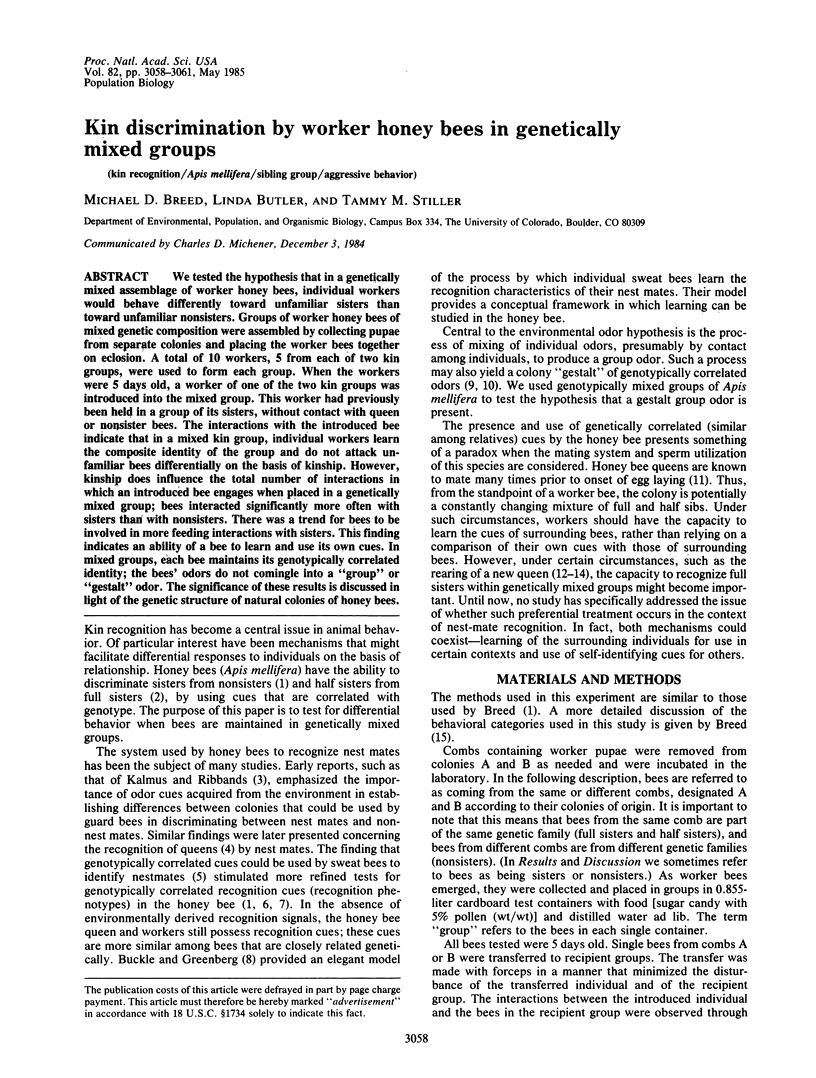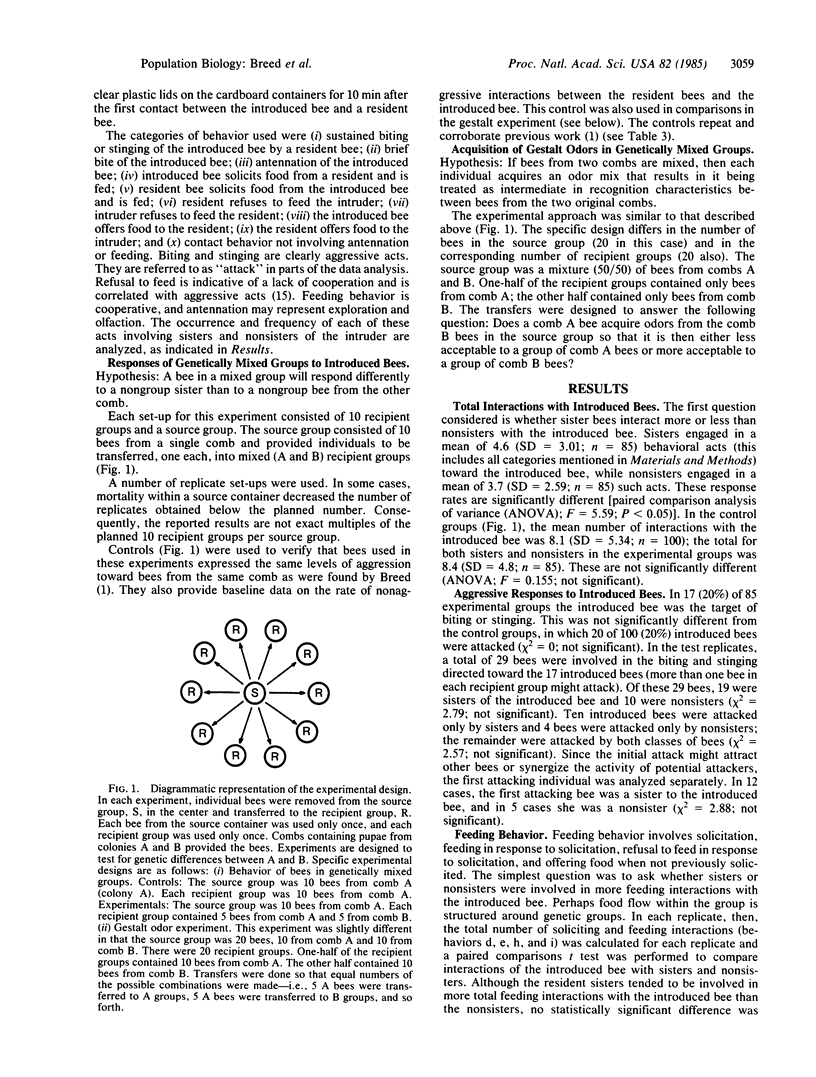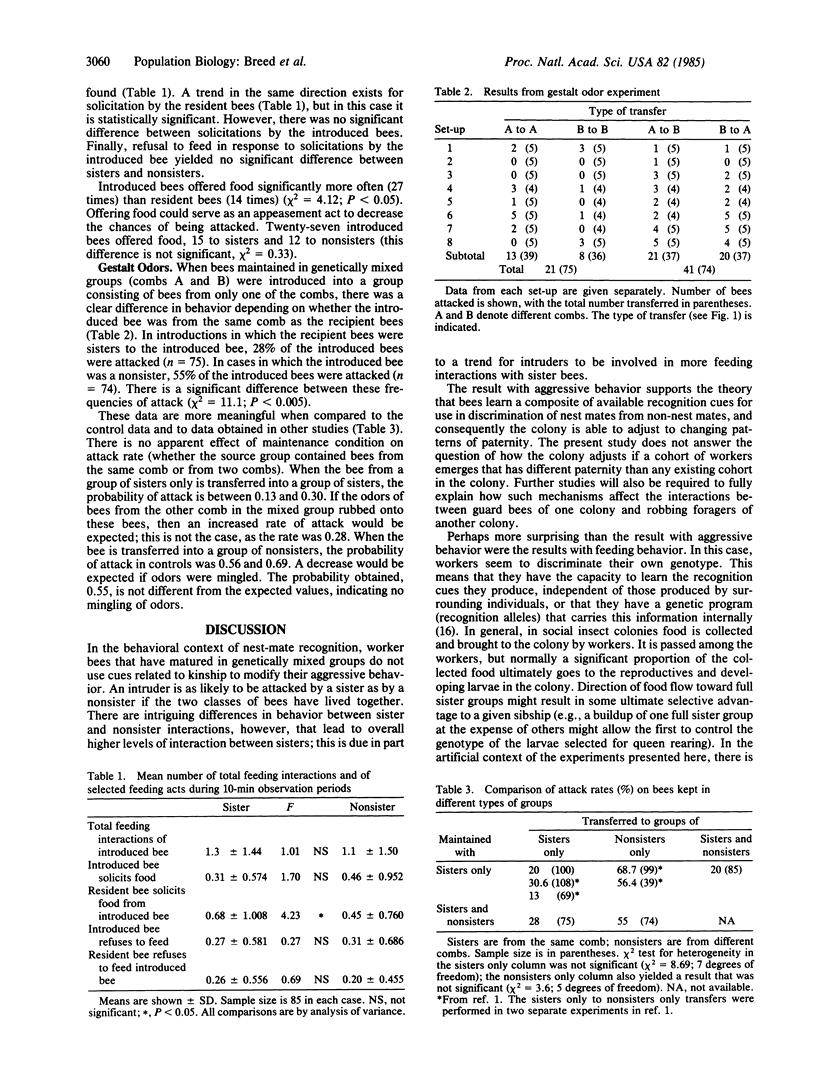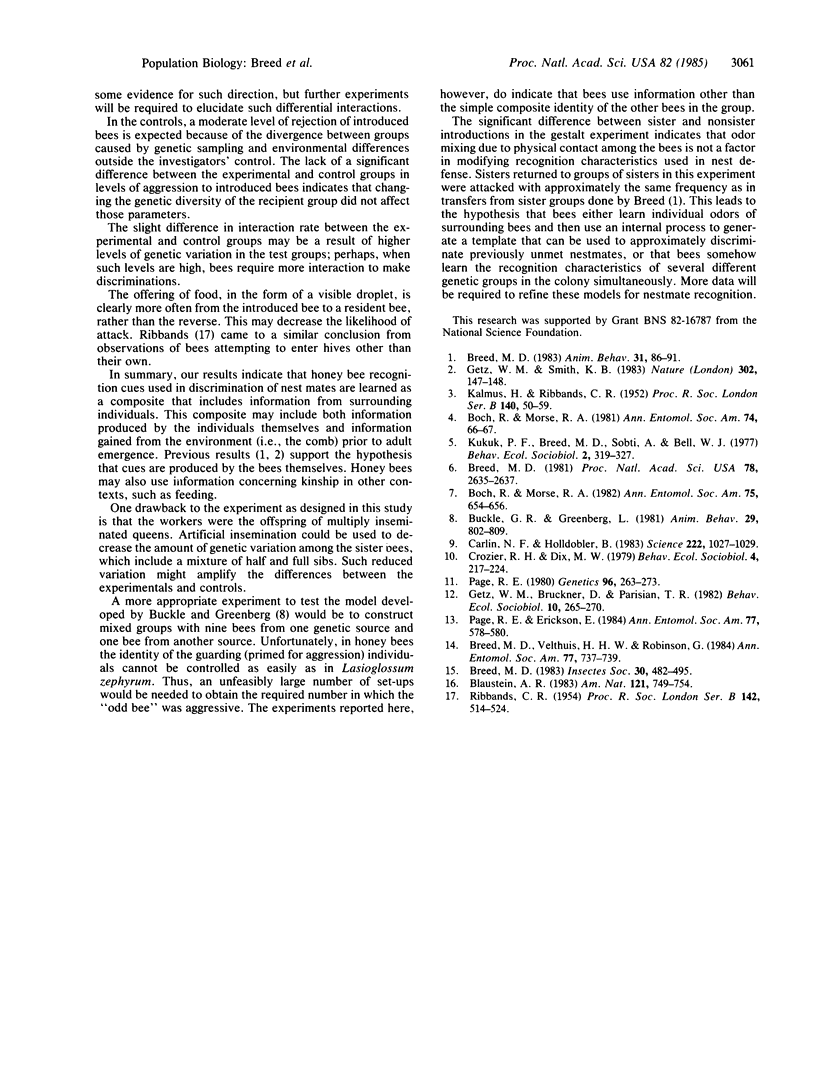Abstract
We tested the hypothesis that in a genetically mixed assemblage of worker honey bees, individual workers would behave differently toward unfamiliar sisters than toward unfamiliar nonsisters. Groups of worker honey bees of mixed genetic composition were assembled by collecting pupae from separate colonies and placing the worker bees together on eclosion. A total of 10 workers, 5 from each of two kin groups, were used to form each group. When the workers were 5 days old, a worker of one of the two kin groups was introduced into the mixed group. This worker had previously been held in a group of its sisters, without contact with queen or nonsister bees. The interactions with the introduced bee indicate that in a mixed kin group, individual workers learn the composite identity of the group and do not attack unfamiliar bees differentially on the basis of kinship. However, kinship does influence the total number of interactions in which an introduced bee engages when placed in a genetically mixed group; bees interacted significantly more often with sisters than with nonsisters. There was a trend for bees to be involved in more feeding interactions with sisters. This finding indicates an ability of a bee to learn and use its own cues. In mixed groups, each bee maintains its genotypically correlated identity; the bees' odors do not comingle into a “group” or “gestalt” odor. The significance of these results is discussed in light of the genetic structure of natural colonies of honey bees.
Keywords: kin recognition, Apis mellifera, sibling group, aggressive behavior
Full text
PDF



Selected References
These references are in PubMed. This may not be the complete list of references from this article.
- Breed M. D. Individual recognition and learning of queen odors by worker honeybees. Proc Natl Acad Sci U S A. 1981 Apr;78(4):2635–2637. doi: 10.1073/pnas.78.4.2635. [DOI] [PMC free article] [PubMed] [Google Scholar]
- Carlin N. F., Hölldobler B. Nestmate and kin recognition in interspecific mixed colonies of ants. Science. 1983 Dec 2;222(4627):1027–1029. doi: 10.1126/science.222.4627.1027. [DOI] [PubMed] [Google Scholar]
- KALMUS H., RIBBANDS C. R. The origin of the odours by which honeybees distinguish their companions. Proc R Soc Lond B Biol Sci. 1952 Aug 27;140(898):50–59. doi: 10.1098/rspb.1952.0043. [DOI] [PubMed] [Google Scholar]
- Page R. E., Jr The evolution of multiple mating behavior by honey bee queens (Apis mellifera L.). Genetics. 1980 Sep;96(1):263–273. doi: 10.1093/genetics/96.1.263. [DOI] [PMC free article] [PubMed] [Google Scholar]
- RIBBANDS C. R. The defence of the honeybee community. Proc R Soc Lond B Biol Sci. 1954 Sep 27;142(909):514–524. doi: 10.1098/rspb.1954.0040. [DOI] [PubMed] [Google Scholar]


